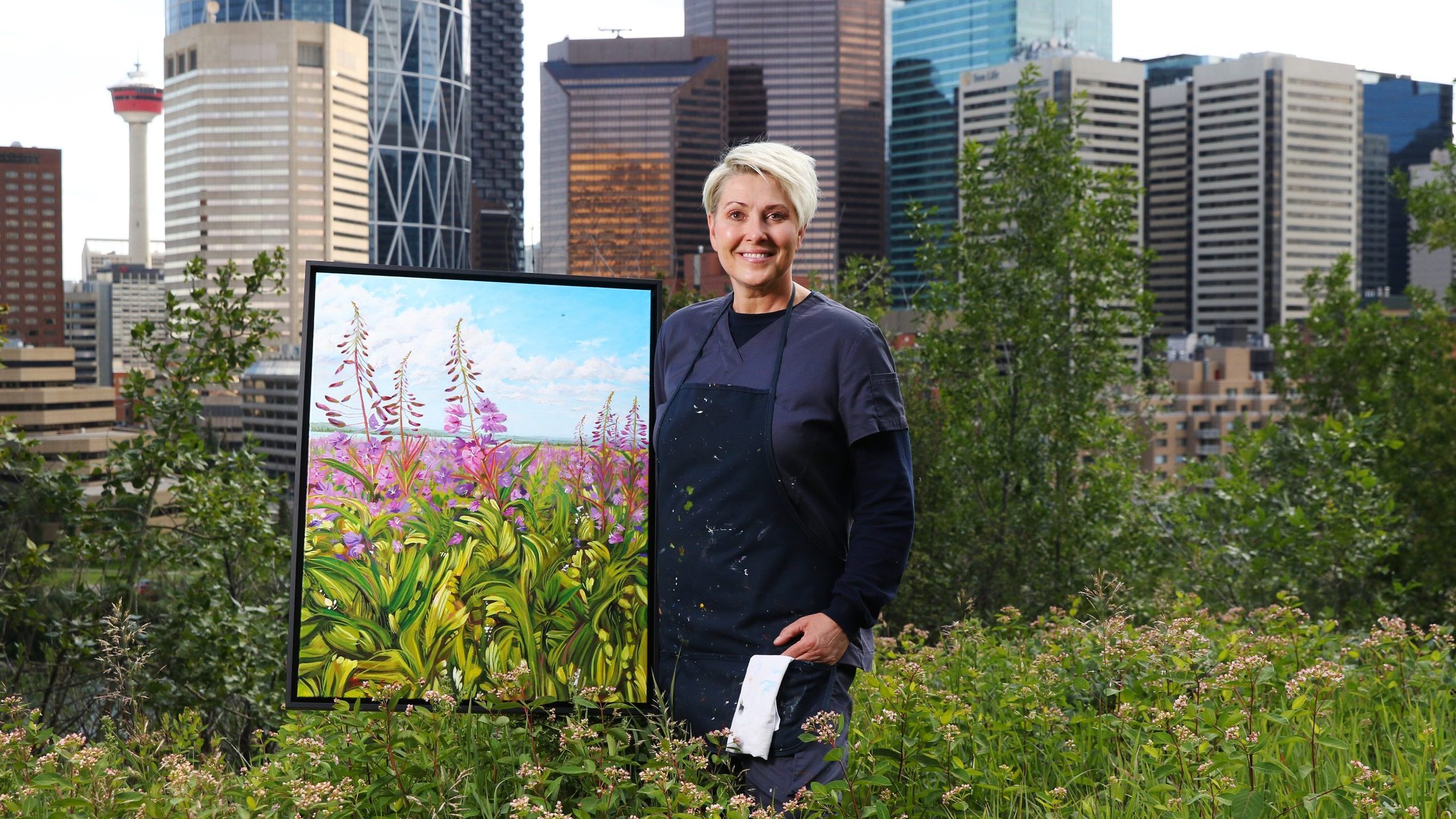There’s something about art that can change a person’s perspective. An artist’s interpretation can highlight the stunning beauty in the most ordinary, like the rich grasses in a prairie field or marshy shrubs in a boreal wetland.
For painter Shannon Carla King, that beauty carries even more importance because her landscapes are reclaimed former oil and gas sites. She wants her art to ignite curiosity and help reframe the conversation about Canadian energy.
“Each reclaimed site is an untold story that shows how Canadian reclamation, innovation and consultation with Indigenous experts has evolved, advanced, and emerged as a world leader in caring for the land which we all benefit from,” she says.
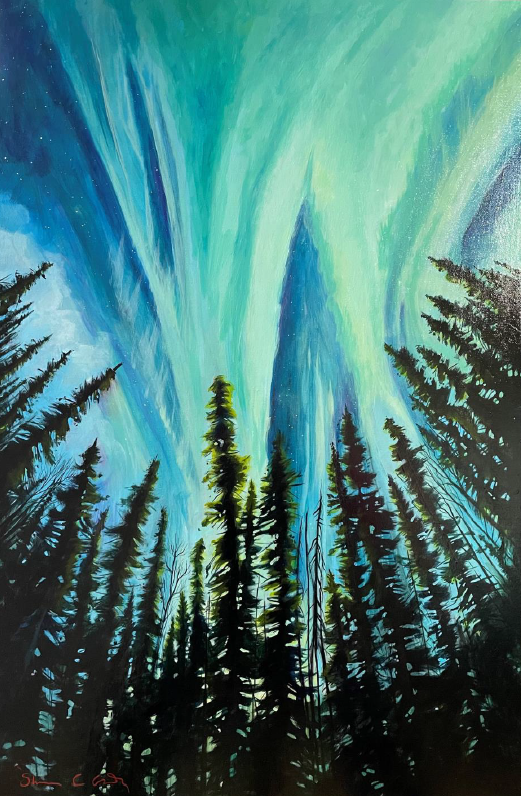
Bill’s Lake Lightshow: Inspired by “Bill’s Lake” a reclaimed marsh on land that is part of the Syncrude project. Image courtesy Shannon Carla King
King recently had her first solo showing as a full-time artist following a 30-year career in the oil and gas sector. She pairs her paintings with digital technologies like virtual reality headsets to provide deeper insight into reclamation activities.
This year her work, which includes paintings like “Only the shadow knows” (inspired by Syncrude’s South Bison Hills growing forested areas that are not always known by the public as part of reclamation of mined landscapes) and “Wapisiw Lookout” (the first reclaimed tailings pond in the oil sands industry), was also displayed at the 2023 Global Energy Show, and will be featured as part of the Ten Peaks Innovation Xchange student conference this fall.
King sat down with the Canadian Energy Centre to talk about her art, and her goals.
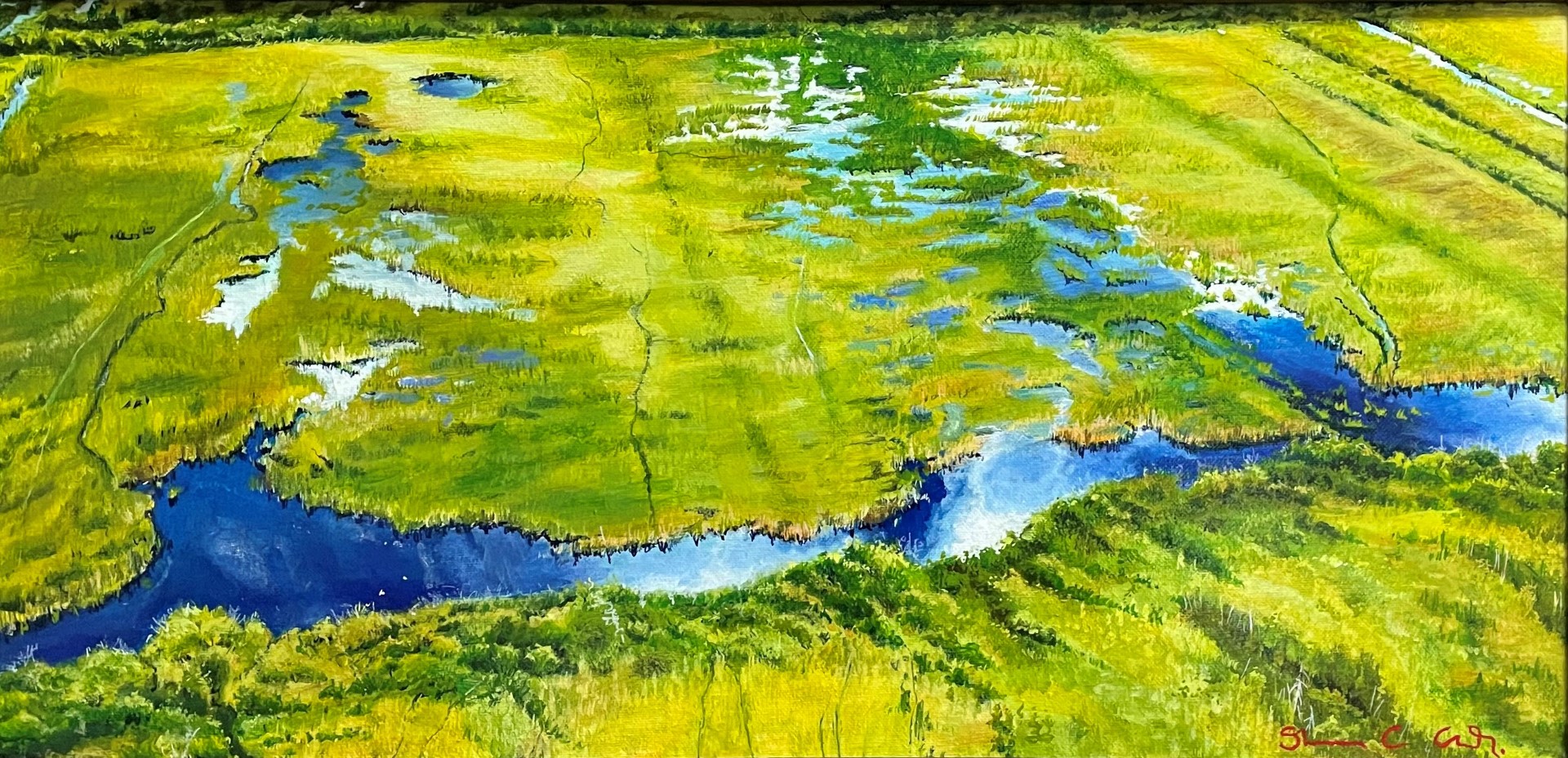
2022 CLRA Award Commission: This painting was commissioned to honor the 2022 CLRA IN-TECH Reclamation Award winner: Peatland Ecology Research Group. Image courtesy Shannon Carla King
CEC: What do you think is the biggest misunderstanding the public might have about reclamation in the oil and gas industry?
SCK: I think that the biggest misunderstanding the public has about reclamation is that they are not aware of the work that is being done.
I don’t believe the public is even aware that there is a budget set aside for this type of work. I don’t believe they are aware of the scientific experts, the test labs or the Indigenous consultation that takes place, or the years of monitoring following the initial restoration or repurposing of the site.
If you conduct an online search for “any company name” plus “reclamation” it will likely take you to a 100-page sustainability report. The public is really looking for before and after photos, they are looking for a paragraph that does not use technical language, [looking for] a location, a two-minute video, a photo that depicts that clean, restored beauty as a result of the millions of dollars spent.
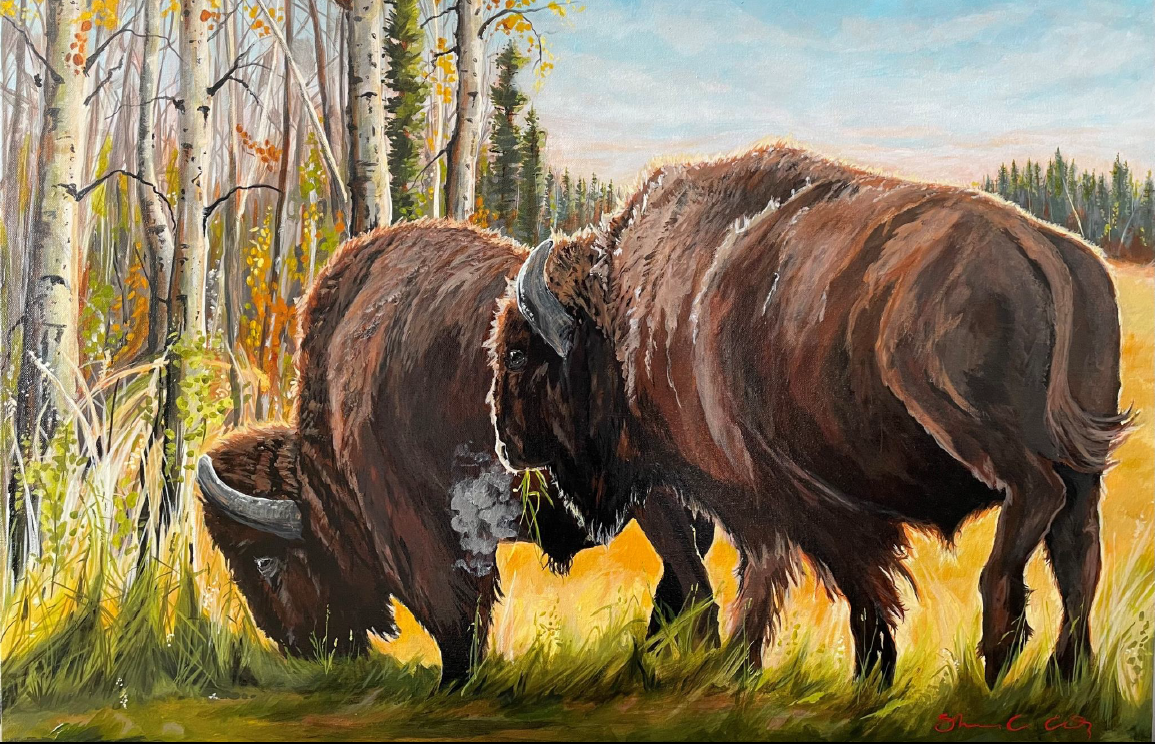
Hungry Syncrude Dudes: Inspired by Syncrude’s reclamation efforts to sustain Wood Bison on reclaimed oil sands lands. Image courtesy Shannon Carla King
CEC: Why do think it is important to communicate reclamation successes in different ways to reach the public?
SCK: On June 1, 1963, the Surface Reclamation Act was enacted, making Alberta the first province to enact legislation on land reclamation.
Methods, technology and consultation have improved immensely since then, and yet there are few signs on the road beside reclamation projects to tell the public about the work, or the project is located in a remote location away from the public eye. And the mainstream media does not seem interested in sharing these good news stories.
The corporations are, of course, completing land closure activities because of a regulatory requirement – however there is a disconnect on how they are sharing these accomplishments with the general public.
In fact, many of the company photos of reclaimed land include employees in personal protective equipment. I don’t think they realize that these images can send an indirect message to the public. There is a perception that there are still hazards at the reclaimed site.
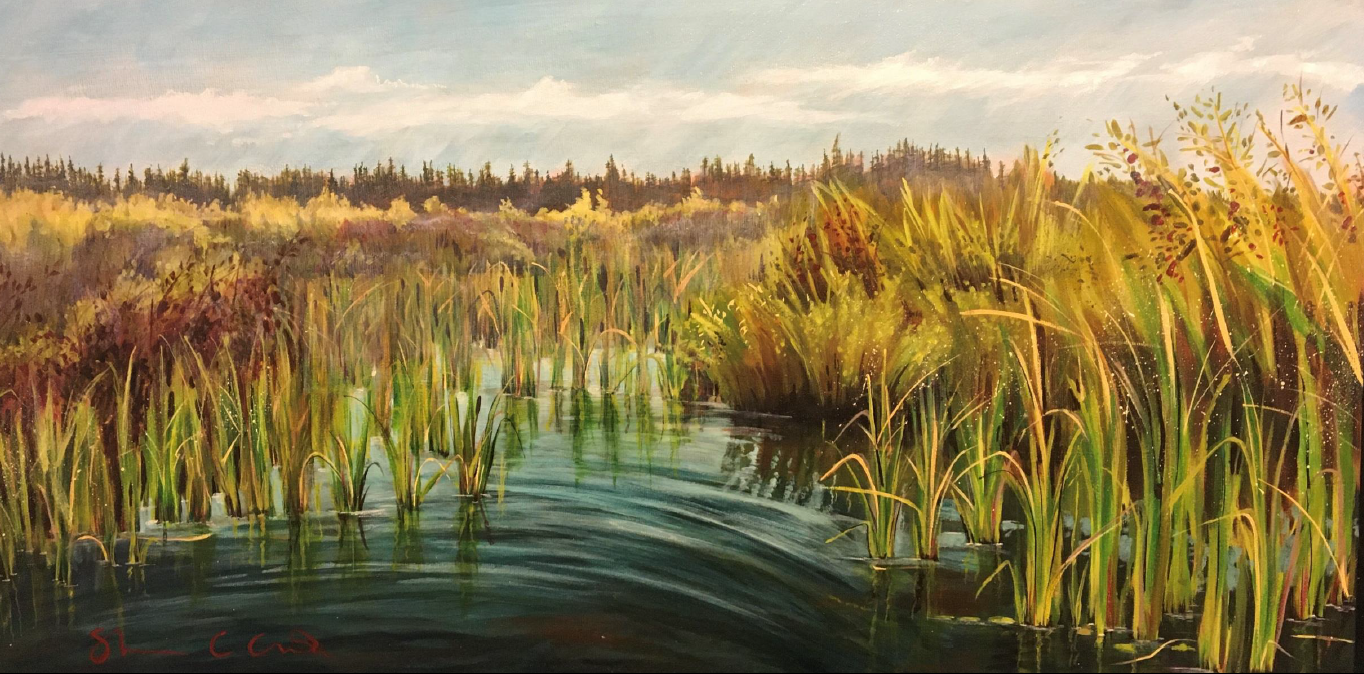
FH Settling Pond 2: Inspired by Fort Hills contractor Hatfield Group, which designed and built a settling pond to remove sediments from water prior to the release of the water back into natural waterbodies. Image courtesy Shannon Carla King
CEC: What is special about how art specifically communicates to the public?
SCK: I just finished a book called “The Creative Act: A Way of Being” by Rick Rubin, and he expresses my thoughts probably better than I could when he says, “As artists, we aim to live in a way in which we see the extraordinary hidden in the seemingly mundane, then challenge ourselves to share what we see in a way that allows others a glimpse of this remarkable beauty.”
Companies might not see the remarkable beauty in their reclamation projects in the way that I see it from an artist’s perspective. By capturing the raw, natural beauty of each reclamation site in a painting, I am hoping to reach people on an emotional level.
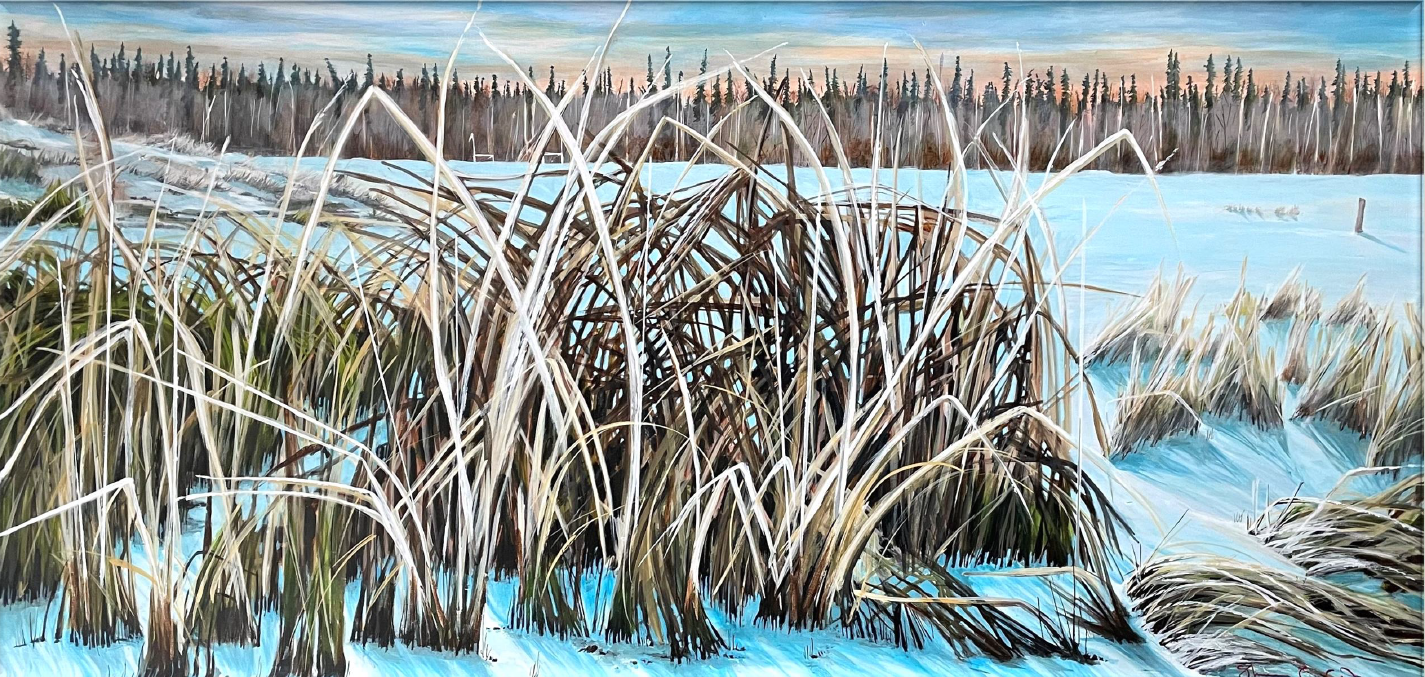
Lake Miwasin Dancing Grasses: Inspired by Suncor Energy’s demonstration pit lake called Lake Miwasin and how the company bolstered tailings technology by incorporating cultural, spiritual and community-led perspectives of the land to help on the reclamation journey. Image courtesy Shannon Carla King
CEC: What is the advancement that you are most proud of in this industry?
SCK: The advancement that I am most proud of is actually on the outskirts of the industry: the movement that is being led by citizens to collaborate and discuss how we might reframe the conversation on Canadian energy.
Groups like Canada Action, the Canadian Energy Centre, Ten Peaks, Canada Powered by Women, and groups directly involved in reclamation like the Canadian Land Reclamation Association.
My goal is to be a leader of this movement to help individuals and organizations find better ways to share their commitment of responsible development and land use using landscape paintings as a driver for curiosity.
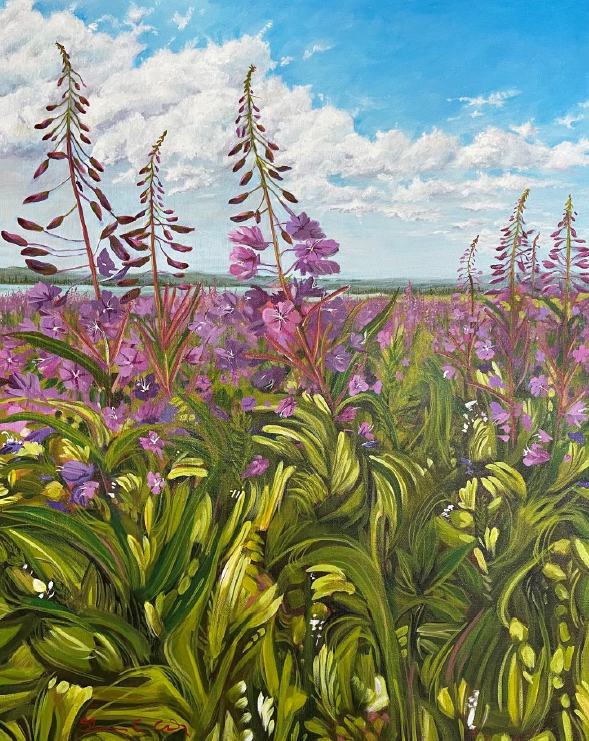
Pretty in Pink: Inspired by the Twin Sisters Native Plants Nursery at Moberly Lake, British Columbia, Canada, which supports the improvement of restoration and reclamation work in Northeastern BC. Image courtesy Shannon Carla King
The unaltered reproduction of this content is free of charge with attribution to Canadian Energy Centre Ltd.
